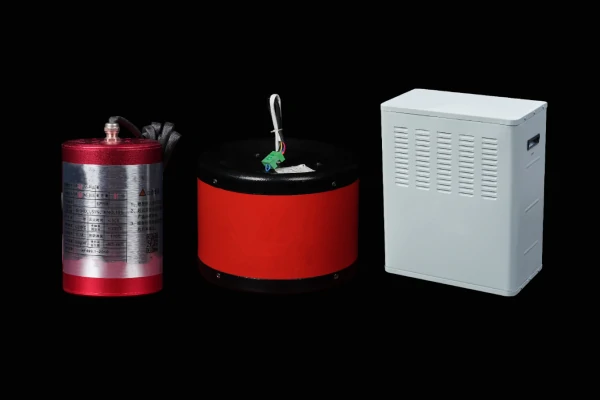Aerosol gas fire extinguishing System
Home » Aerosol Gas Fire Extinguishing System


Characteristics of the Aerosol gas fire extinguishing System
- Outstanding Advantages: It is an excellent means of protecting facilities, especially suitable for enclosed environments in hazardous areas. It holds renowned certifications such as UL Class1, Zone 2, ATEX, and UL IECEx.
- Highly Efficient Fire Extinguishing: It achieves highly efficient fire extinguishing by generating ultra-fine metal salt particles, and its fire extinguishing efficiency is ten times that of gas systems.
- Economical and Practical: It requires a small installation space and has a light weight, being unrestricted by space. It hardly needs any maintenance and has a service life of up15 years.
- Installation Key Points: Professional technicians are required to carry out the installation and commissioning to ensure the best performance and safety. Strict compliance with safety standards is a must during the installation process.
Specifications and Technical Parameters
Model Specifications
Comment:D: Electrical Activation W: Thermal Activation C: Electromagnetic Activation
| Model Specifications | Protected Volume (m³) | External Dimensions (mm) | Activation Method |
| QRR1GW/S | 6 | 290*230 | D、W、C |
| QRR3GW/S | 20 | 290*230(circular) | D、W、C |
| QRR3GW/S | 20 | 300*250*160(square) | D、W、C |
| QRR5LW/S | 34 | 380*300*690 | D |
| QRR7.5GW/S | 50 | 290*830 | D、W、C |
| QRR1OLW/S | 67 | 560*300*690 | D |
Technical Parameters
| Product Model | National Standard |
| Operating Temperature Range | 20℃~+55°C |
| Working Environment Relative Humidity | ≤95% |
| Basic Design Quantity of Fire Extinguishing Agent | 0.15kg/m³ ~0.14kg/m³ |
| Release Time | ≤120S |
| Extinguishing Time | (After the discharge is complete)≤30S |
| Exit Temperature at Nozzle 5mm | ≤200℃ |
| Maximum Box Temperature | ≤200℃ |
| Direct Current Resistance | 1~5Ω |
| Activation Conditions | DC24V/1~2A(Minimum Activation Current700mA) |
| Safe Current | 150mA/5 min |
| Multi-Unit Interlocking Method | Series Connection |
| Shelf Life | Seven Years |
| Insulating Performance of By-products | ≥20MΩ |
| Non-corrosive | No obvious color change in the brass plate |
Application Scenarios
Electrical fires: Such as fires in equipment rooms, computer rooms, control rooms, power distribution rooms, generator rooms, and cable rooms (including tunnels and mezzanine areas).
Solid surface fires: Such as in libraries and record storage rooms.
Liquid fires or fires of solids that can melt, such as paraffin and asphalt: Class B fires caused by various flammable liquids like gasoline, kerosene, diesel, heavy oil, transformer oil, lubricating oil, vegetable oils, and chemical coatings in production, storage, and use areas.
Do you long to add an impregnable fire barrier to your space?
Flarenix aerosol gas fire extinguishing system is your best choice!
